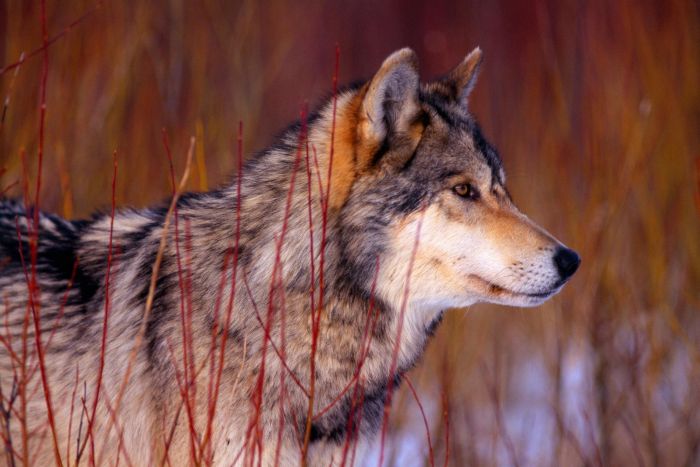|
|
Gray Wolf
|
• Folklore and mythology
Wolves appear prominently in the folklore and mythology of human cultures. In Norse and Japanese mythology, wolves were portrayed as almost god-like. In Japan, grain farmers worshiped wolves at shrines and left food offerings near their dens, beseeching them to protect their crops from wild boars and deer, while the wolf Fenrir of Norse mythology was depicted as the son of Loki. Certain cultures portrayed wolves as part of their foundation myths. In Roman mythology, the Capitoline Wolf nurses the future founders of Rome, Romulus and Remus. In the mythology of the Turks, Mongols and Ainu, wolves were believed to be the ancestors of their race, while the Dena’ina believed wolves were once men, and viewed them as brothers. Wolves were linked to the sun in some Eurasian cultures. The Ancient Greeks and Romans associated wolves with the sun god Apollo, while the wolf Sköll in Norse mythology was depicted pursuing the setting sun. Wolves were sometimes associated with witchcraft in both northern European and some Native American cultures. In Norse mythology, the völva (witch) Hyndla and the giantess Hyrrokin are both portrayed as using wolves as mounts. In Navajo culture, wolves were feared as witches in wolf's clothing. Similarly, the Tsilhqot'in believed that contact with wolves could cause mental illness and death. According to the Pawnee creation myth, the wolf was the first animal to experience death. According to the Avesta, wolves are a creation of the evil spirit Ahriman, and are ranked among the most cruel of animals. Wolves are referenced thirteen times in the Bible as symbols of greed and destructiveness.
Livestock and dog predation
Livestock depredation has been one of the primary reasons for hunting wolves, and can pose a severe problem for wolf conservation. As well as causing economic losses, the threat of wolf predation causes great stress on livestock producers, and no foolproof solution of preventing such attacks short of exterminating wolves has been found. Wolves typically resort to attacking livestock when wild prey is depleted: in Eurasia, a large part of the diet of some wolf populations consists of livestock, while such incidences are rare in North America, where healthy populations of wild prey have been largely restored. However, certain wolves may become "addicted" to livestock, as the stomach lining of domestic ungulates has a higher fat content than that of wild herbivores. The majority of losses occur during the summer grazing period. Untended livestock in remote pastures are the most vulnerable to wolf predation. Some nations help offset economic losses to wolves through compensation programmes or state insurance. Sheep are the most commonly taken livestock species in Europe, domestic reindeer in northern Scandinavia, cattle and turkeys in North America, goats in India and horses in Mongolia. As wolves tend to attack large prey from behind, cattle may be more vulnerable to wolves than horses because the latter are better able to defend their hind quarters with powerful kicks. Different subspecies of wolf may preferentially target different animals: small bodied wolves rarely molest adult cattle, while large northern wolves are able to kill fully grown steers and sometimes horses unaided. The number of animals killed in single attacks varies according to species: most attacks on cattle and horses result in one death, while turkeys, sheep and domestic reindeer may be killed in surplus. Wolves mainly attack livestock when the animals are grazing, though they will occasionally break into fenced enclosures. Injuries caused by wolves on large bodied livestock include docked ears and tails, as well as slash wounds on the lower legs. In some cases, wolves do not need to physically attack livestock in order to negatively affect them; the stress livestock experiences in being vigilant for wolves may result in miscarriages, decreased weight gain, and a decrease in meat quality.
|
|









